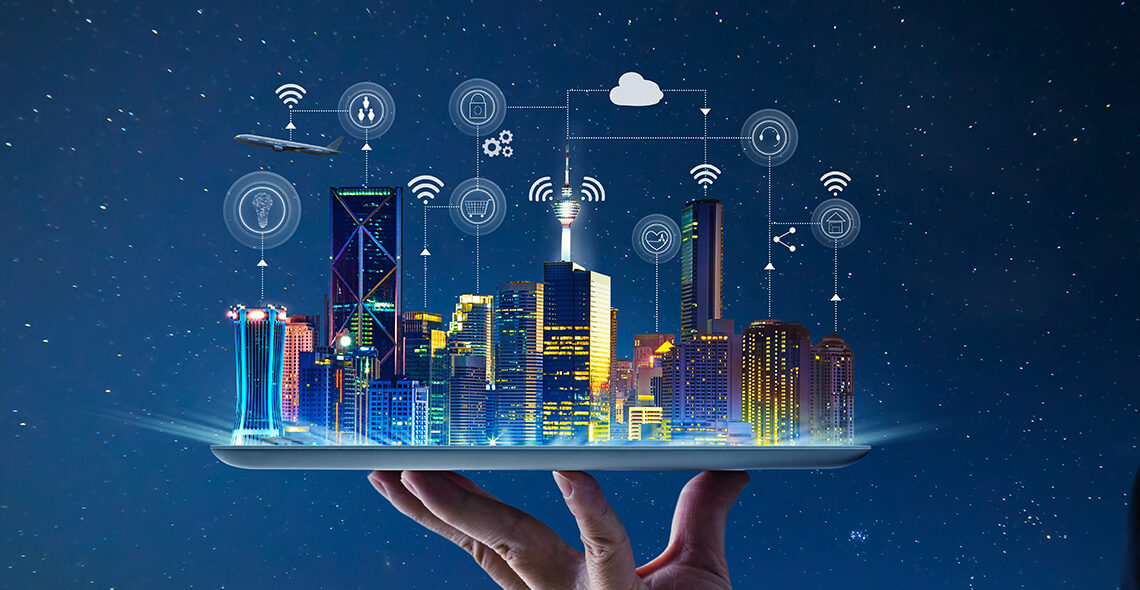An interview with Andy Karvonen, Professor, Urban Design and Planning, Lund University
Smart cities are often talked about as the cities of the future, with much excitement surrounding the technological advances they offer. But this narrative has the potential to leave people behind.
We caught up with Andy Karvonen, Professor of Urban Design and Planning at Lund University who advised that in order to achieve truly smart cities, we must take a step back and consider them from society’s viewpoint, rather than just focusing on what can be done in terms of technology.
“We’re seeing smart cities employing more pragmatic strategies and becoming more concerned with improving people’s everyday routines. If we look at the landscape in the UK, whose cities regularly feature in the IMD Smart City Index, local authorities are less caught up in grand visions than they are determined to enhance their citizens’ lives.
Ultimately, it is people living in smart cities that will use and benefit from their features. If these features don’t naturally enhance their everyday lives, they simply won’t use them. Even worse, if citizens are strongly opposed to any of the underlying technologies and data usage, they’ll actively resist their adoption. Such concerns have to be addressed if smart cities are to succeed.”
Karvonen says: “It's about trying to bring in that human and social and cultural and political perspective and saying: this is not neutral. This stuff that we're doing with digitalising cities, opens up a lot of questions around privacy, with respect to risk, with respect to equity issues and justice issues.
“There's been this big push in the last five to ten years, with social scientists saying: we want to be talking about this. Citizens need to be part of this conversation. What do they think about this? Where do they see it going? How can they be involved? Those are critical questions that must be answered.”
Building foundations
Once smart city planners have established what citizens actually want and need from their city, only then can they begin to think about the process of creating the smart city itself. As ever, it starts with laying the right foundations.
While this may sound simplistic, it can be easy to overlook the importance of the less glamorous aspects of smart cities. High-capacity, low-latency core connectivity, for example, is an absolute must. It underpins the smooth functioning of smart city technology, particularly when next generation technologies like 5G, artificial intelligence and the Internet of Things rely upon it.
On the importance of robust core fibre connectivity, Karvonen says: “We think of it as the circulatory system of the smart city. Without the latest and greatest fibre, the smart city doesn't work. If we look at the digitalisation of ourselves as individuals at home and in the office, we're going to have a deluge of data. We need the pipe to carry that data. That's the critical role that the fibre networks will naturally fulfil.
What’s driving smart cities onwards?
When the Covid-19 pandemic and its associated lockdowns hit, cities around the world emptied, throwing regular routines out of the window. Traffic dried up, shops closed and business districts were deserted. This gave us the chance to reset and reflect upon what we want from cities, in terms of sustainability, function and much more.
But even before the pandemic, societies were becoming much more conscious of human impacts on the environment – and how to mitigate them.
Karvonen says: “What we've seen, particularly over the last decade or so, is the opening up of the smart city debate to say that technology is not an end in itself. Technology serves society, and what we've moved towards is technology as a way for us to achieve our sustainable development goals. That gives smart cities a purpose and we see that using digital tools can improve the lives of urban residents.
“There's a really close coupling of smart and sustainable, and within sustainable would be zero carbon emissions and resilient cities. What's interesting is when the whole smart cities debate started, it wasn't really focused on sustainability, it was more about optimising public services. What we've seen as the debates about smart cities have matured, is that they've really started to focus on particular long-term sustainability goals such as the net zero carbon emissions by 2050. Again, it's giving smart a concrete purpose.”
Whatever a smart city’s goals morph into, or whether we approach city planning from a citizen’s point of view or not, the need for robust core connectivity will remain constant. Projects on the scale of smart cities, where there’s a constant flow of real-time data, simply won’t function properly without high capacity, low latency networks in place. That’s where companies like Neos Networks really come into play. They’re known for supporting the development of smart cities across the UK.
Learn more about how we've helped Perth and Kinross council in the deployment of smart cities across the region.





